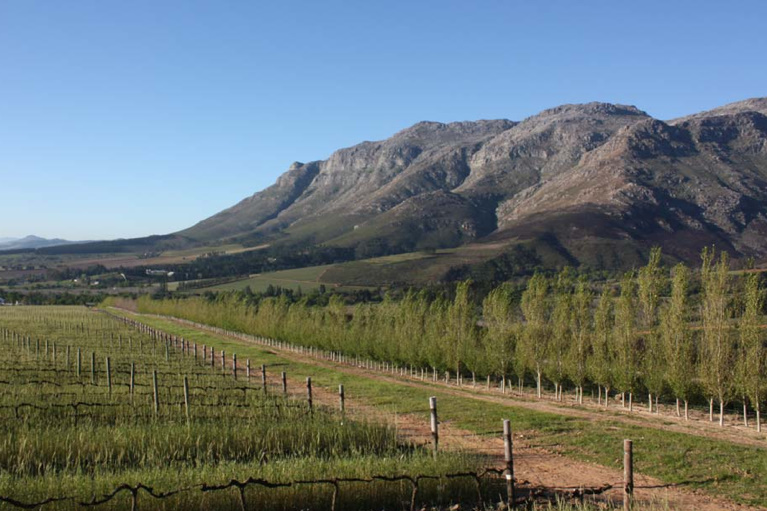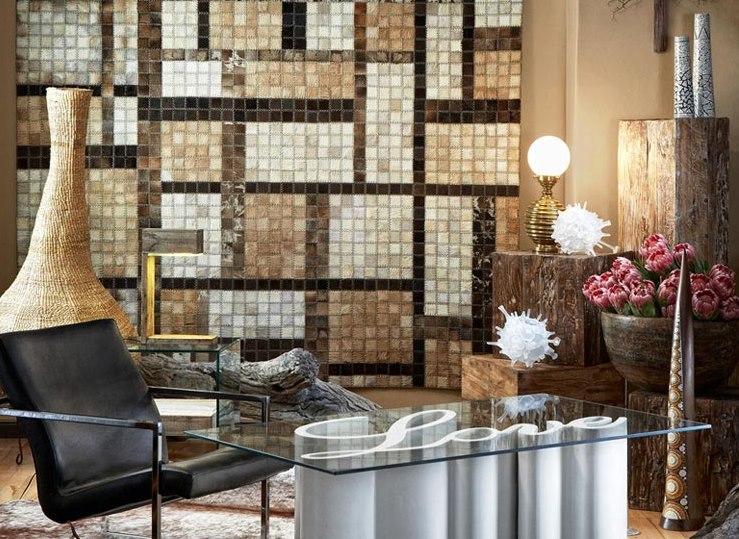
Silvana Bottega, CEO of Southern Africa Luxury Association, suggests the South African luxury market holds huge potential, but must overcome some fundamental hurdles to flourish
Silvana Bottega, CEO of Southern Africa Luxury Association, suggests the South African luxury market holds huge potential, but must overcome some fundamental hurdles to flourish
The inclusion of South Africa, on 24 December 2010, into the BRIC markets altered the compass for luxury. The weathervane no longer points due east but also turns south, to Africa. South Africa, in particular, is seen as the gateway for Africa, where there is blossoming potential for sales growth in the luxury sector.
In comparison with markets like China or India, the numbers are still relatively modest but there is hope for brands looking to expand their luxury markets. Finding your feet in South Africa, home to billionaires like Johann Rupert, Nicky Oppenheimer, Christo Wiese, Patrice Motsepe and Patrick Soon-Shiong, is a step towards increasing global presence and reaching up into the still relatively untapped great African continent.
A South Africa Divided: Rich & Poor
The statistics show a South Africa that is economically and socially divided. Over the last decade there has been immense growth in the black middle class, sometimes referred to as ‘black diamonds’, and the high net worth (HNW) management elite. Yet around 31 million people, from an estimated population of 55 million, subsist on paltry R550 a month (approximately €54).
According to Datamonitor’s ‘Wealth Management in South Africa’ report there were only 638,000 affluent individuals with over $50,000 in liquid assets in 2010. However, the report also showed the prospect for growth, as the number of individuals with an asset band of $1 to $1.5million is scheduled to increase from 2011 figures of 18,100 to 26,900 in 2014.
For the most part, South Africa’s uber-rich list is tied to either the financial services or the mining industries. The advantages of investing in South African raw materials are self-evident with a soaring gold price that, according to the Business Times, has seen ‘FNB sell more than 5,000 ounces of gold in 5 months, has investors taking sizeable individual orders of physical gold coins and in a 6 month period after FNB Share Investing made Kruger Rands available online saw over R75million invested’.
“ South Africa is renowned for having one of the most well developed and effectively regulated financial service industries ”
Collectable coins from The SA Gold Coin Exchange have seen sales increase by 50% in the same 6 month period, spurred by the increasing price of gold and the collectability of the product which highlights aspects of South African heritage and commemorates major moments in history like the recent British Royal Wedding. The Royal Wedding £5 Gold Proof Crown had a limited mintage of 3000 and launched at R29,500 (approximately €2,800).
In Africa, South Africa is renowned for having one of the most well developed and effectively regulated financial service industries. We are fortunate to have three members of the Southern African Luxury Association (SALA) who are leaders in the management of funds in the high net worth arena. With the growing interest and engagement between luxury brands, private banks and wealth management businesses, we have created a platform to bring them together and will be hosting the first SALA Wealth Summit in South Africa in February 2012.
An Investment Opportunity for Luxury
Market demand for support in the luxury sector to capture the buying opportunity of the South African HNW consumer has enabled SALA to grow well in a relatively short period of time. We have requests for strategic assistance for South African market entry strategy from a broad range of sectors, and both large and niche luxury brands, looking to establish a foothold from which to expand. The dominant sectors in the last few months have included furniture, fashion and footwear, linen and home-ware, high-end gourmet and fine beverages.

Waterford Wine estate in Stellenbosch
An Experimental Consumer in Wine & Spirits
Whilst for a long time South African’s have predominantly supported local vineyards, there are an increasing number of specialists who focus on French and Italian wines & spirits. International spirits are fast growing, although the import numbers for international wine to the South African market are still nominal, but wine buyers are growing in sophistication and desire to stray from the beaten local track. Consumers have developed a more experimental buying pattern and unique events have been created to ensure that buyers have the opportunity to collect.
Although many products have not yet found their way to the liquor store shelves there are niche cognacs and rare millesimes that are finding their way to collector’s caves. Whiskey distilleries and large cognac houses in particular are increasingly paying attention to the potential of wealthy black consumers in South Africa having seen the dividends paid to early engagement with other emerging markets like China.
Michael Fridjhon, a local importer and leading wine writer, has long facilitated access for consumers wishing to invest in fine French reserves through the annual ‘Michael Fridjhon Wine Experience’, based in Johannesburg. One of South Africa’s most elite hotels in Constantia, The Cellars-Hohenort, is renowned for their extensive wine selection and has leveraged that equity by hosting The Big Bottle Wine Festival, orchestrated by Jorg Pfutzner, a Cape Town based German sommelier. The event showcases the magnum bottles of the finest local producers along with their international peers.
“ Whiskey & cognac houses are increasingly paying attention to the potential of wealthy black consumers in South Africa ”
Local Luxury on the Rise
South Africa promises a lot on the local luxury landscape. The leather goods market in particularly is flourishing; Cape Cobra is a leading light in South African leather manufacturing and are releasing the world class Allure Collection at the start of September. Hanneli Rupert will also launch her eagerly anticipated Okapi range at the end of the year.
Labour costs are relatively high for an emerging market but the value of design in creating margin-value is well understood by the South African Department of Trade and Investment. In the private sector, Ravi Naidoo, through his work over the last 16 years building the Design Indaba, is highlighting the quality of South African design and is a supporter of Cape Town’s bid to be named as a key Design Capital.
A third of the R9bn from the South African jobs fund, which is part of the New Growth Plan initiative, is earmarked for enterprise development and we hope that some of this investment will be channeled into high-end manufacturing. It is critical that we invest in best practice partnerships to develop South African skills to improve competitiveness on the global stage.
Traditional crafters need to move their ‘craft towards craftmanship’ and designers need to make objects that are of high demand and are competitively priced. Across sector, from ‘designer’ jewellery through to fashion and even perfume, the price for ‘local design’ is still often out of kilt with quality. By investing in the industry, hopefully this will be addressed and generate much-needed employment in South Africa as well as ensure that design becomes a way to empower the city of Cape Town.

An Avoova interior, featuring products made with Ostrich shell, sourced from farms located around Oudsthoorn
Inflated prices are driven by excessive free media exposure given more to locally designed products which in one way is positive in building credibility about local luxury brands and, for the less worthy, gives an inflated sense of demand that sees many local brands struggle when they try reach into international markets and their product is not in line with the market. Up until now, South African design still offers the allure of being uniquely South African, however to sustain long-term demand, a greater emphasis on quality needs to be a reality for luxury goods manufacturers who intend to demand more than a light international presence.
SALA is a passionate advocate of South African design and actively tries to help design-centric businesses to grow. As such, SALA developed an Artisan Accelerator program, which takes on 3-4 young brands a year and incubates them through their development. We have previously assisted Haldane Martin, Keith White Diamond Mastery and Aidan Bennetts, and have recently taken on Avoova as a new artisan member worthy of global recognition.
Avoova is a good example of South African design with the authenticity, story and the quality to go global. They employ over 40 artisans in the Karoo who work with a unique veneer process using ostrich shell. It is a successful example of how nature’s raw ingredients can be used in an ethical and sustainable way to craft small luxury items, exquisite objets d’art and bespoke pieces, which can be scaled to be used on yachts and in hotels. They have already been commissioned to create ostrich eggshell tables for the Eclipse, on behalf of its owner, Roman Abramovich.
“ The retail price for luxury products is considerably higher than in Europe. Businesses who out-price themselves must change strategy ”
The Market Needs a Correction
The South African market holds huge potential but there remain some hurdles. The retail price for not just local products but also the majority of international luxury products is considerably higher than in Europe. Along with inflated rental prices in key cities, many of these luxury brands fall under local distribution stables, the reins of which are in the hands of a few key franchise owners driving up product prices. Businesses who out-price themselves must change strategy and there are currently noticeable shuffles in the furniture industry.
‘The mood to buy’ is clearly being influenced by the knock-on effect of the developed markets slowdown. Retailers are feeling the pinch and retail costs per square foot are high relative to the sales volume return. They have to be innovative and few centres are standing out as worth their salt. Hyprop’s Hyde Park Shopping Centre in Johannesburg is one such centre – they support their tenants and through their savvy strategy of sponsoring key events at the centre, they succeed in driving bursts of high value footfall. Two events to be hosted at the centre in the upcoming months are the Food Wine Design and the Johannesburg Champagne Festival. We also look forward to seeing Porsche Design opening in this space in October.

